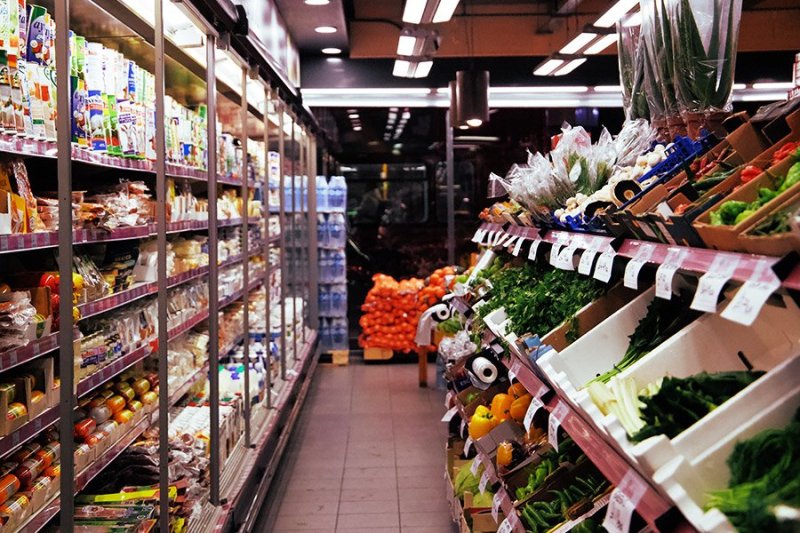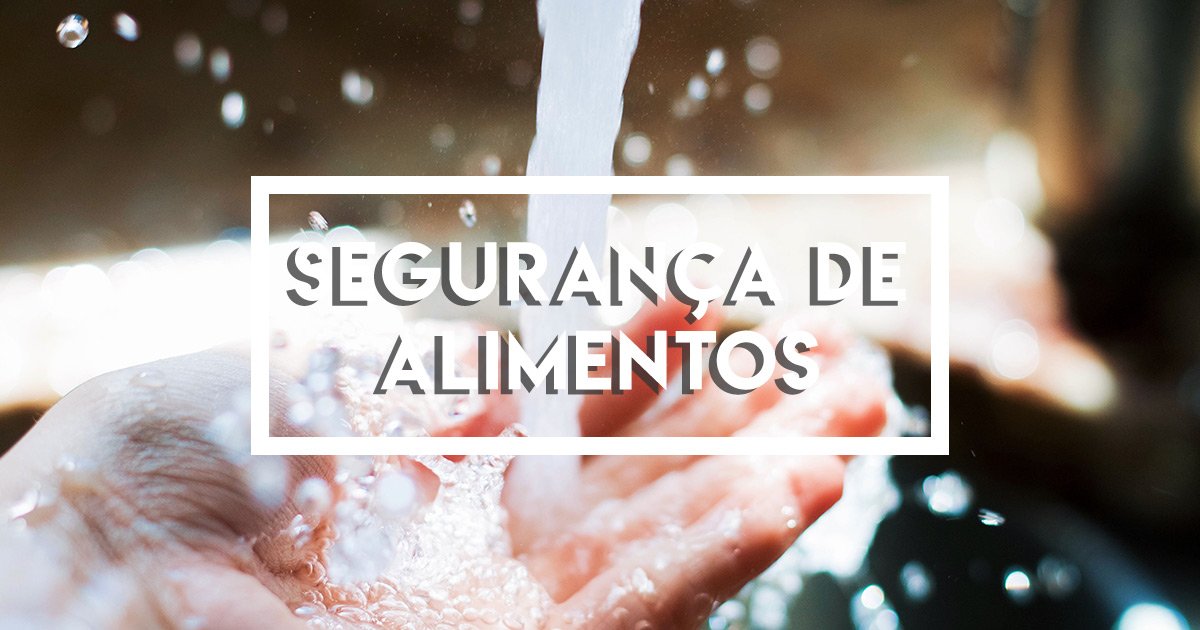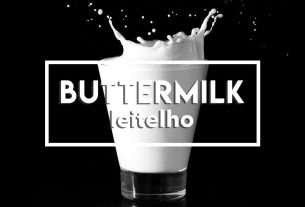Information about the COVID-19yours relationship with food and what we can do. The first: Be very calm at this time, okay?
The intention of this text is to clarify some points about this 2020 outbreak of Coronavirus and how it may or may not influence our food security.
As usual: Always based on facts e evidence from reliable sourcesand of course, the references are at the end of the article.
Or what is Coronavirus, SARS-CoV-2, COVID-19?
Let’s do it by steps! Each name means one thing:
- Coronavirus: it is a group of viruses that cause diseases in humans and birds. In humans, it causes infections in the respiratory tract.
- SARS-CoV-2: and the official name of the virusbeing the acronym for Severe acute respiratory syndrome coronavirus 2 (severe acute respiratory syndrome coronavirus 2) that causes a disease.
- COVID-19: and the official name of the disease caused by the virus SARS-CoV-2being the acronym for Coronavirus disease 2019.
despite the SARS-CoV-2 Being a new virus, it has similarities with other coronaviruses such as SARS-CoV-1 (this was responsible for the near SARS outbreak in 2002) and MERS.
How do you catch COVID-19?
It is an infection caused by the virus SARS-CoV-2 in the respiratory tract and the main form of contagion is between people via droplets of saliva and/or mucus from infected people when sneezing or coughing dispersed into the air.
The first data on the disease, the Centers for Disease Control and Prevention (CDC) indicates that the main way of spreading the virus and with crowd of peopleif any (or several) are infected.
That’s why in different places around the world have been canceled events and being prohibited to avoid having too many people in the same place. Thus, we managed to limit the spread of the virus.
And why is this important? With these measures, we were able to offer protection for those who are most vulnerable to the disease: elderly, patients with severe chronic illnesses, immunocompromised whether due to illness treatment or medication. Generally, this form of protection is provided via vaccinebut as the virus is new, it doesn’t exist yet.
Is there another way to contract the virus?
According to the German Federal Institute for Risk Assessment (BfR), there is no case with evidence that the disease resulted from contact with food or articles contaminated with the virus.
However, the German institute indicates that transmission via a recently contaminated surface would be possible, but unlikely. To do this, the person would have to touch the surface, then touch the eye or nose inside. of a short period of time due to the low stability of the virus in the environment.
The Centers for Disease Control and Prevention (CDC) reports that so far did not register fecal-oral contamination. The real risk of contamination via the feces of an infected person is not yet known, but the risk is expected to be minimal when compared to other types of coronavirus.
Also according to the American body, the virus was not detected in drinking water. And the sanitation and water treatment system must remove or inactivate the virus.
How long does the virus stay in food?
Information on whether the virus is active in food is still limited. What is known is: the virus is more stable on non-porous surfaces and inorganic (such as metal and plastic), and loses stability faster in organics like cardboard. The residence time also depends on factors such as temperature, humidity and light.
Is it possible to contract COVID-19 from food?

According to the main health and safety entities in the world, Centers for Disease Control and Prevention (CDC), US Department Of Agriculture (USDA), European Food Safety Authority (EFSA), there is no evidence what be possible contracting the disease via food or packaging.
This was compared with other similar coronavirus outbreaks (SARS-CoV and MERS-CoV) and this occurrence was not seensegundo a World Health Organization (WHO).
Is it absolutely certain that food does not transmit COVID-19?
No, absolutely not. Since information about this is still very limited. However, the study of food-borne diseases is known e studiedand to date COVID-19 doesn’t fit their standard.
An example given by J. Kenji López-Alt from Serious Eats: If a cook to cough or to sneeze about the food (yes, that would be pretty disgusting), how am I not going to get it? virus and have COVID-19?
The risk of developing the disease is minimalsince the entry route was through digestive system. And because it is a virus respiratory tract need the respiratory system to be able to multiply, as indicated in the 2018 article Transmission routes of respiratory viruses among humans.
Another scenario you might be thinking of, if instead of to cough e to sneeze directly into the food, for in preparation utensils as a board and she touches the food. And finally, do you eat with your hands?
Kenji indicates that he would have a series of viral load dilutions (the amount of virus present). It would go from the board to the food, from the food to the packaging, from the food to your hands, and finally from your hands to your face. O food safety specialist which he consulted (Ben Chapman) does not rule out the possibility, but the chance would be as small as a “moonshot”.
But remember: use clean cutlery and napkins and wash hands before eating is always welcome.
Are there any risks associated with food?
From what we know so far, no. If we talk about food purchased in restaurants and the like, establishments are expected to follow the Good Handling and Hygiene Practices that to ANVISA regulates. These Practices must always be followednot just now and at home too!
There is even Primer on Good Practices for Food Services based on Resolution RDC 216/2004 – Technical Regulation of Good Practices for Food Services.
Food Hygiene and Sanitization at Home
At home, the process remains the same already very common and well-known food hygiene and sanitation. It is also available on primer and ANVISA Shall we remember?
- Wash the vegetables one by one under running water (vegetables, leaves, fruits…) removing large dirt such as dirt, stones, insects and the like.
- Soak the vegetables in a solution of chlorinated water by 10 minutesis generally used Bleach (Sodium hypochlorite). The most commonly used dilution is 15mL of 200ppm bleach (1 tablespoon) for 1 liter of water.
- Rinse the vegetables one by one under running water and let them drain.
- Use in sequence or keep well stored in the refrigerator.
An addendum regarding Bleach: read the label on yours. Generally, manufacturers inform the dilution that must be used for food sanitation. And some should not be used. Then, pay attention to this.
I ordered ready-made food, does reheating eliminate the virus?
Yes, if you want to do that. Temperature e tempo are factors for leaving a food consumer insurance when we talk about eliminating bacteria, fungi e virus. This applies to any occasion, not just now. But remember: the establishment is expected to follow the Good Handling and Hygiene Practices.
For the specific COVID-19 virus (SARS-CoV-2), data is still limited. But studies with viruses from the same group indicate the inactivation via heat treatment from 63ºC for 3 minutes. That is, the food standing above this temperature would be enough.
For solid food, such as chicken breast or steak, it is assumed that the virus has not penetrated the food. If it is present, it will only be on the surface. So heating the outside would be enough.
What is expected for the virus is that it behaves like any other pathogen regarding its inactivation during cooking. However, more precise data is still needed to confirm this.
And if I freeze it, does it eliminate the virus?
According to WHO in its bulletin 19 about COVID-19: research is still being carried out regarding the viability and duration of the virus.
Generally, coronaviruses are very stable when frozen and can withstand up to 2 years at temperatures of -20°C. Despite current evidence about other types of coronavirus indicate that they are stable at low temperatures and frozen for a certain period of time: follow the Good Handling and Hygiene Practices can prevent possible transmission via food.
And as we have already seen, the virus is sensitive to heat. So, if it is cooked correctly, the risk is small.
Wash your hands!
A habit that everyone should have, right? Basic hygiene! And you no need for a special soap or soap. No, you don’t need an antibacterial soap.
Firstly, COVID-19 is caused by a virus and not a bacteria. Second, the mechanism by which soap works is the same for all soaps and soaps.
The virus is protected by a coat of fat and proteins. Soap and soap are surfactants that can break down and dissolve this layer, thus inactivating the virus.
Can I use alcohol gel?
Clear! But on some occasions.
If you are at home and/or have access to a sink with soap, wash the hands. Alcohol gel is for cases where you cannot wash your hands immediately. He had to leave the house, for example.
And always use 70% alcohol gel and do nothing at home. Has every wrong recipe being publicized and even if they were right: if you don’t have the training, qualifications or access to the appropriate equipment and reagents for this, why venture into this? As I said, washing your hands is ideal.
What can you do?
- Keep calm, okay?
- Wash your hands from time to time. Left home? Bring hand sanitizer if possible. It returned? Wash the hands.
- Just leave the house if necessary.
- It is not necessary buy food (and not even toilet paper) in a panic, just what you really need.
- Buy foods that have a long shelf life naturally, such as: dried grain, Canned e frozen. So you don’t have to go to the market all the time.
- Give preference to contactless payment (contactless) that some cards and cell phones offer.
- Sanitize Food packaging that is possible, place in other containers before storing in the refrigerator.
- Before you believe in messages coming from Whatsapp, check the information. Did it really come from a reliable source? This is not the time to spread fake news, in fact, it never is. Lives are at risk, remember that.
- Take care of your seniors and yes, now it’s time to tell them: you’re not leaving and no, you’re not everyone.
- Wash your hands, please.
References
- World Health Organization (WHO)
- Centers for Disease Control and Prevention (CDC)
- U.S. Department Of Agriculture (USDA)
- European Food Safety Authority (EFSA)
- German Federal Institute for Risk Assessment (BfR)
- National Health Surveillance Agency (ANVISA)
- Food Navigator
- Serious Eats
- Brazil. Ministry of Health. Department of Health Care. Department of Primary Care. Food guide for the Brazilian population. ed. 2, Brasilia, 2014.
- Brazil. Law No. 11,346, of September 15, 2006. Creates the National Food and Nutritional Security System-SISAN with a view to ensuring the human right to adequate food and provides other measures.
- ANDERSE, KG et al. The proximal origin of SARS-CoV-2. Night With (2020).
- DARNELL, M.E. et al. Inactivation of the coronavirus that induces severe acute respiratory syndrome, SARS-CoV. J Virol Methods. 2004 Oct;121(1) 85-91.
- KUTTER, J. S. et al. Transmission routes of respiratory viruses among humans, Current Opinion in Virologyv. 28, 2018, p. 142-151.

Sign up for our newsletter and stay up to date with exclusive news
that can transform your routine!
Warning: Undefined array key "title" in /home/storelat/public_html/wp-content/plugins/link-whisper-premium/templates/frontend/related-posts.php on line 12
Warning: Undefined array key "title_tag" in /home/storelat/public_html/wp-content/plugins/link-whisper-premium/templates/frontend/related-posts.php on line 13




